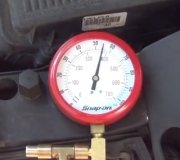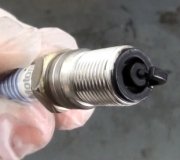You only need the DRB2 if you have anti-lock brakes, and if you ran the master cylinder dry.
Here's the procedure I give my students: Leave the caps on the master cylinder. Draining fluid will build up a vacuum that slows fluid flow. It should only take a few minutes to remove and replace the cylinder. If a time-consuming problem comes up AND fluid continues to drip, use a stick between the seat and brake pedal to hold the pedal down about two inches. This will move the seals past the ports in the reservoir and block them, trapping the fluid and preventing entry of air. When you're done replacing a wheel cylinder, all you need to do is remove the stick and one cap on the master cylinder and let it gravity bleed for a minute. When no more bubbles are coming out of the bleeder screw, finger-tighten it, fill the reservoir, then stroke the brake pedal by hand a few times. This will bump any stuck air bubbles into the wheel cylinder. Open the bleeder once more, watch the couple of bubbles come out, tighten it and you're done.
If you did run the master cylinder empty, but the lines still have fluid in them, you can fill the reservoir, then stroke the pedal a few times to work the air out. Slowly push the pedal about 1/4 of the way done and hold it for 5 - 10 seconds. Then let the pedal come back quickly. Do this a number of times until the pedal starts to feel normal. When you push slowly, you push fluid down and air bubbles float back toward the master cylinder. By letting off the pedal quickly, the fluid rushing back up to the master brings air bubbles with it. This works really well when you are just replacing the master cylinder. You never have to bleed at the wheels. (You do need to bench-bleed the new master before installing it).
If you do have anti-lock brakes, you can try refilling the master cylinder and doing the pedal-pumping trick. Don't turn the ignition switch on because most ABS systems use a high pressure pump to store pressurized fluid. This will circulate air throughout the system making bleeding much more difficult. Air in the hydraulic control unit is impossible to bleed out without opening two valves. That's why you need the DRB2. Under "Actuator Tests", it will activate the valves so fluid and air can flow. Without ABS, running the master cylinder dry adds considerably to the time involved in bleeding the system, but no special tools are required.
It must be pointed out that if the master cylinder is more than a few months old, you must NEVER, NEVER, EVER push the brake pedal more than half way to the floor when bleeding. Scale and crud build up in the unused bottom half of the bores. By pressing the pedal to the floor, you run the seals over that crud and rip them. Now you get to replace the master cylinder too. This can also happen when a brake hose pops. Pretend there's a 4" x 4" block of wood under the pedal.
Caradiodoc
Wednesday, April 1st, 2009 AT 3:22 AM



